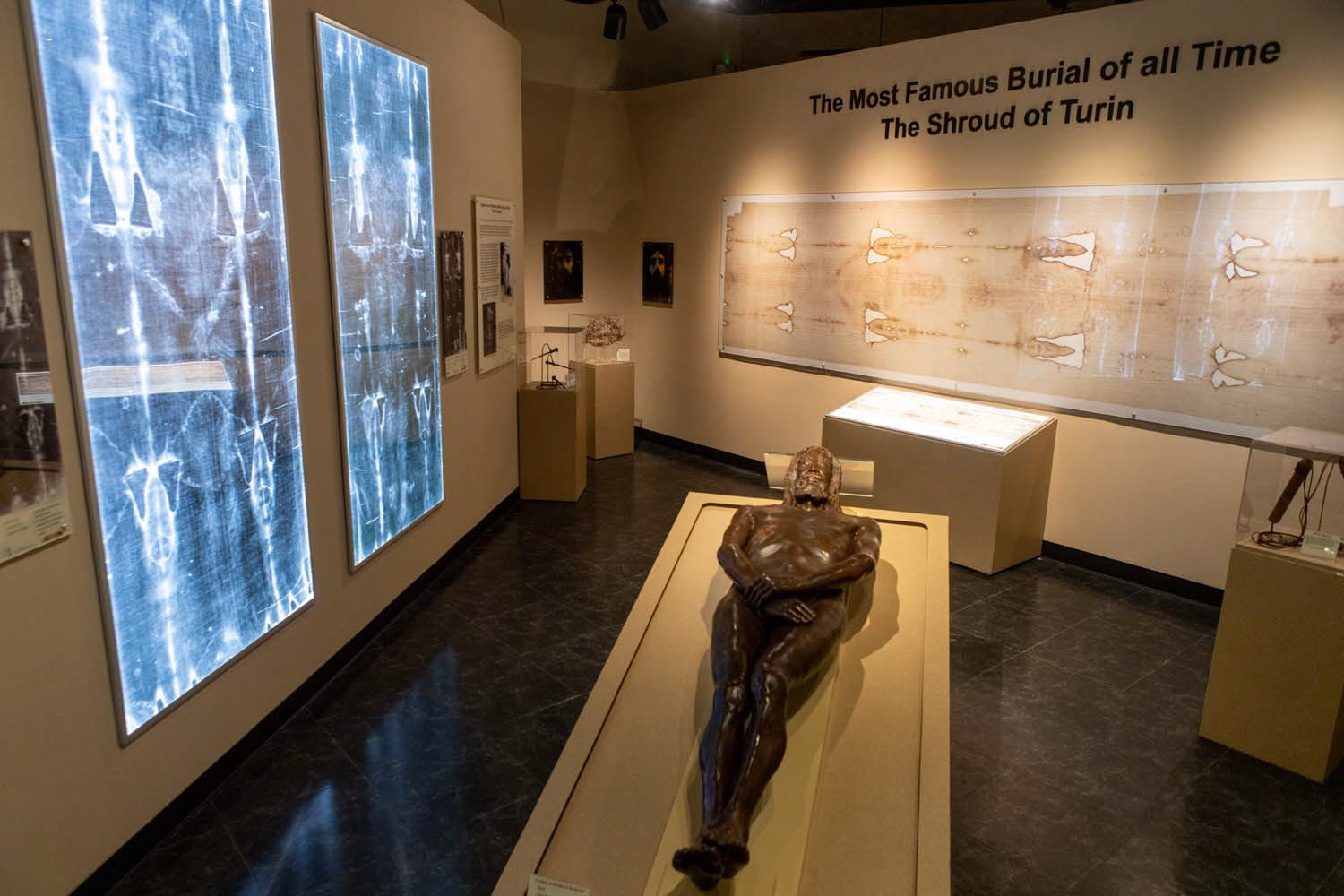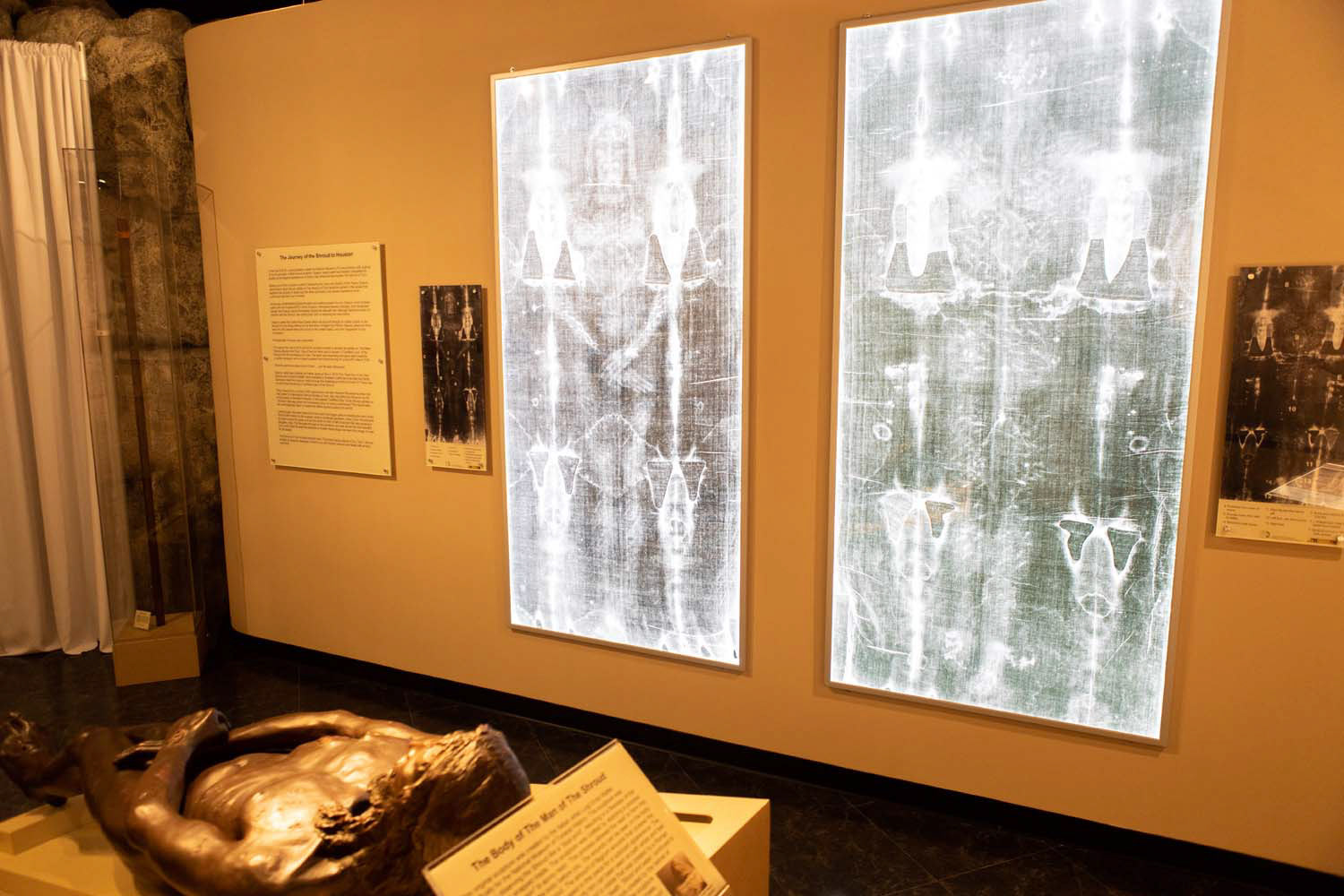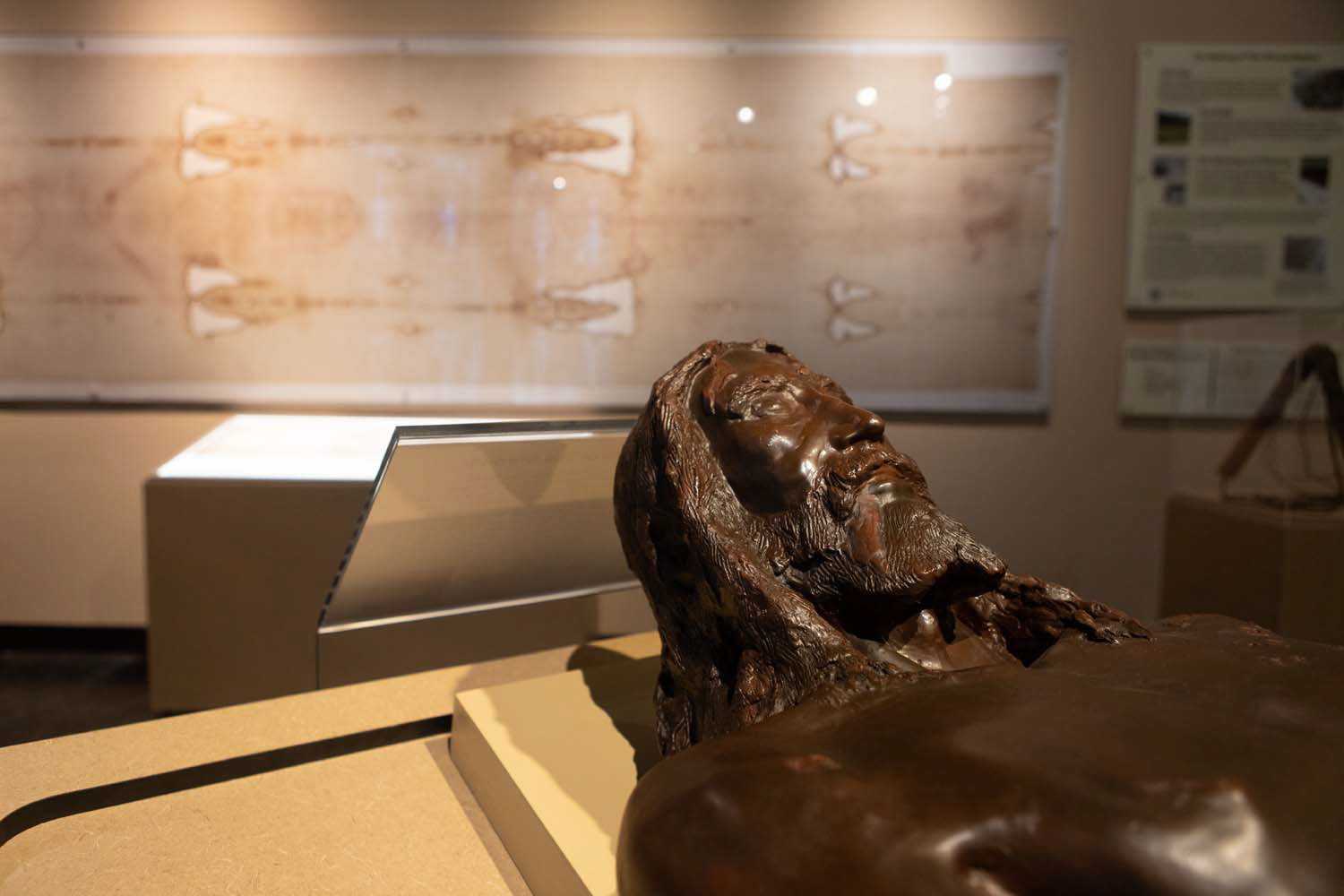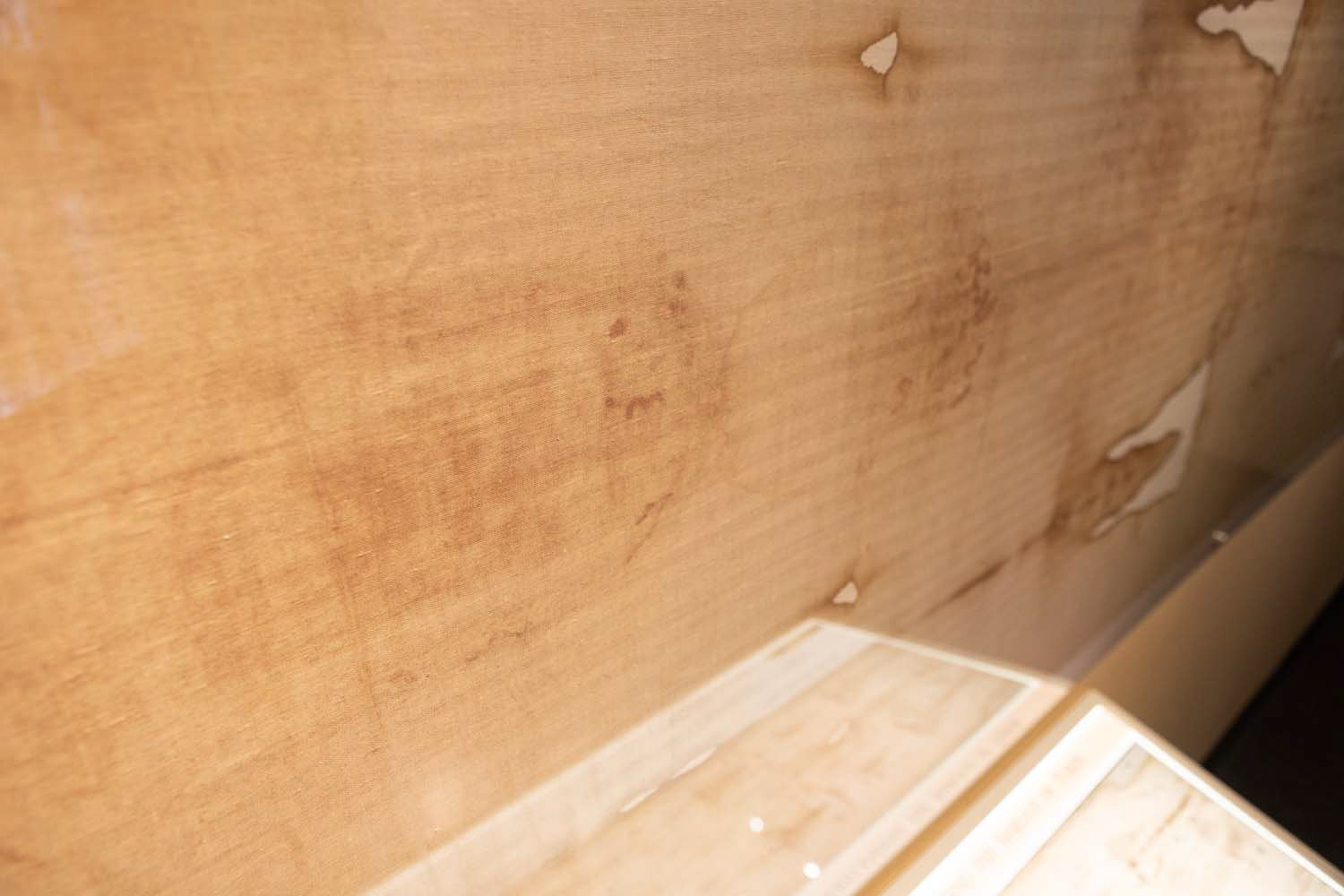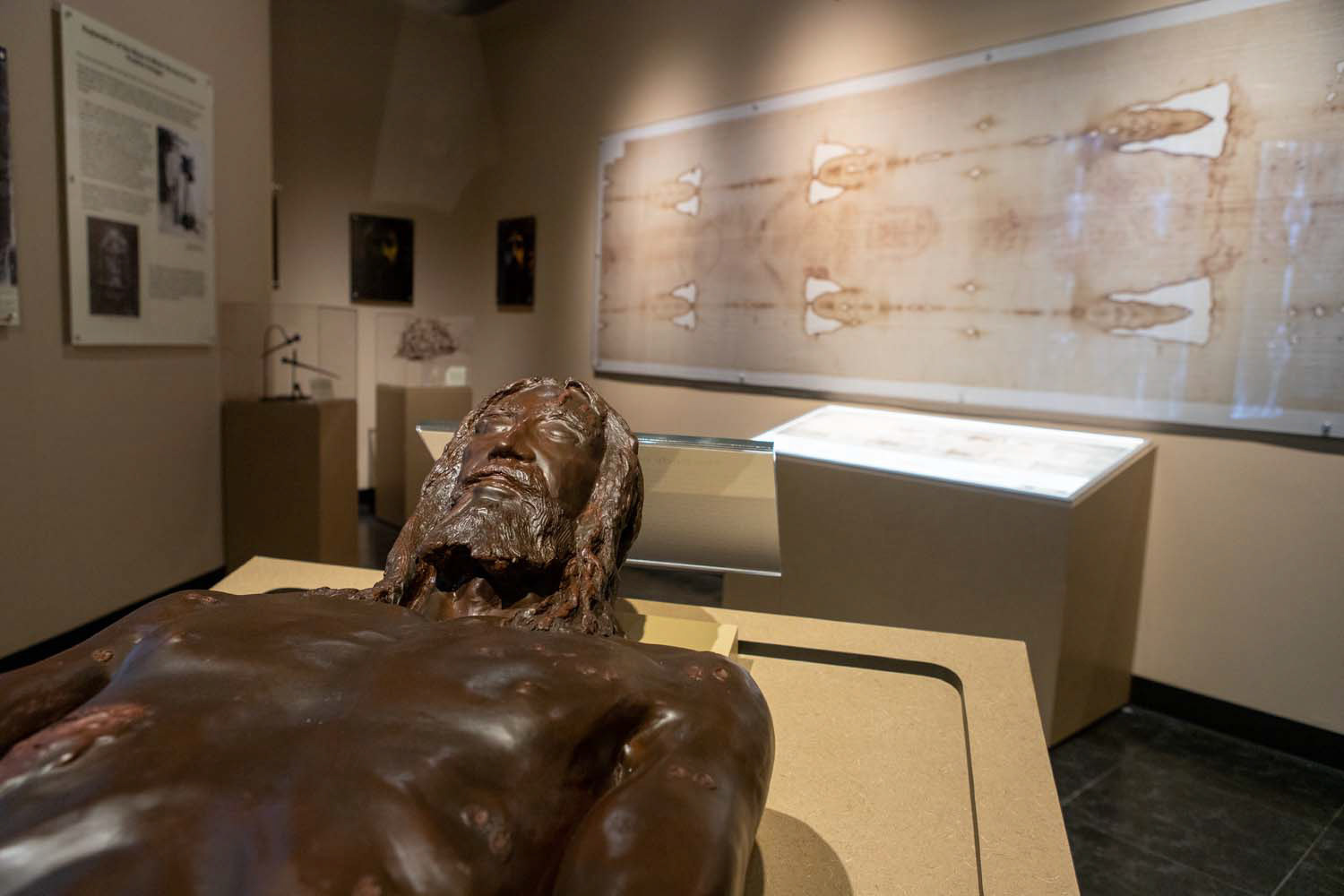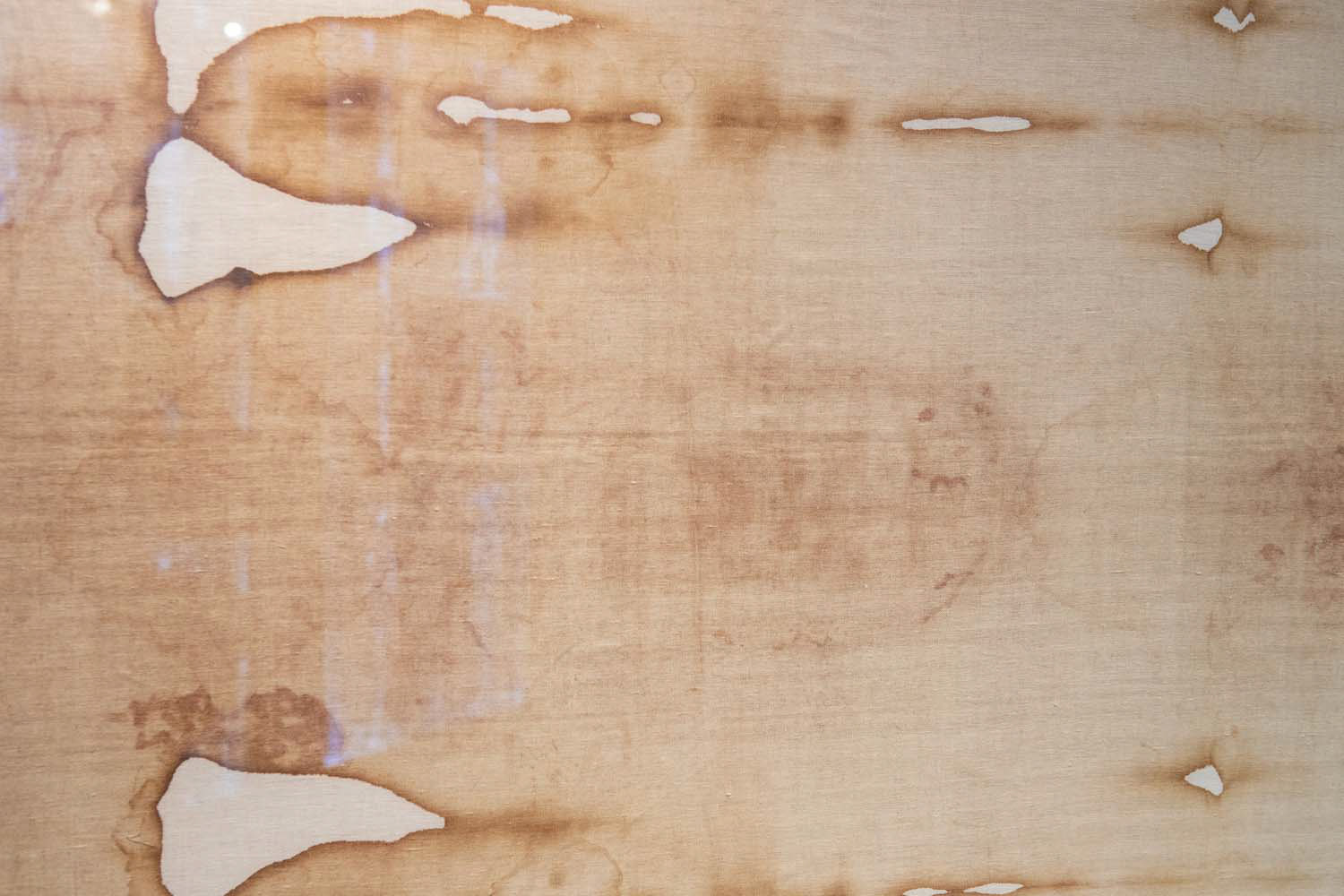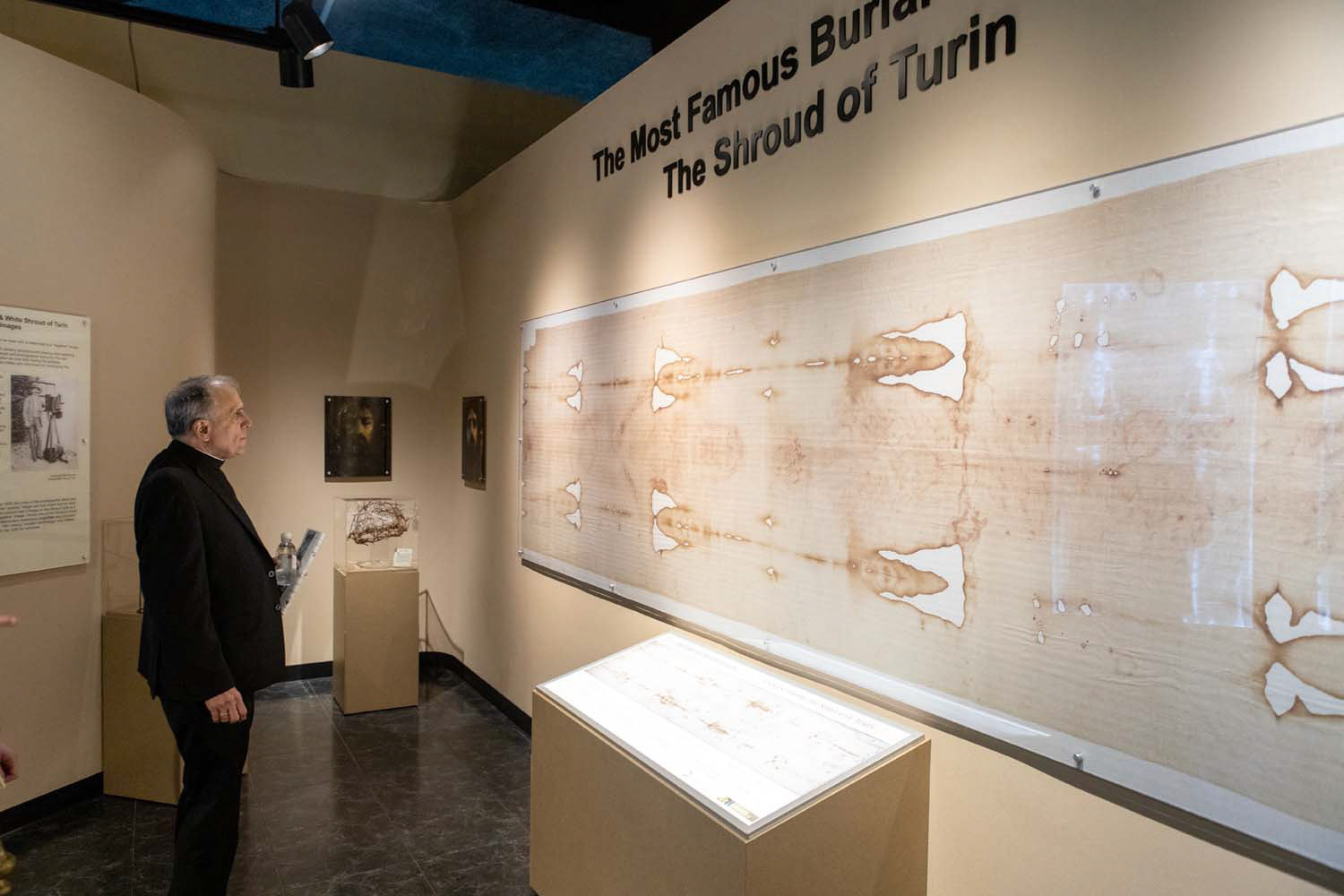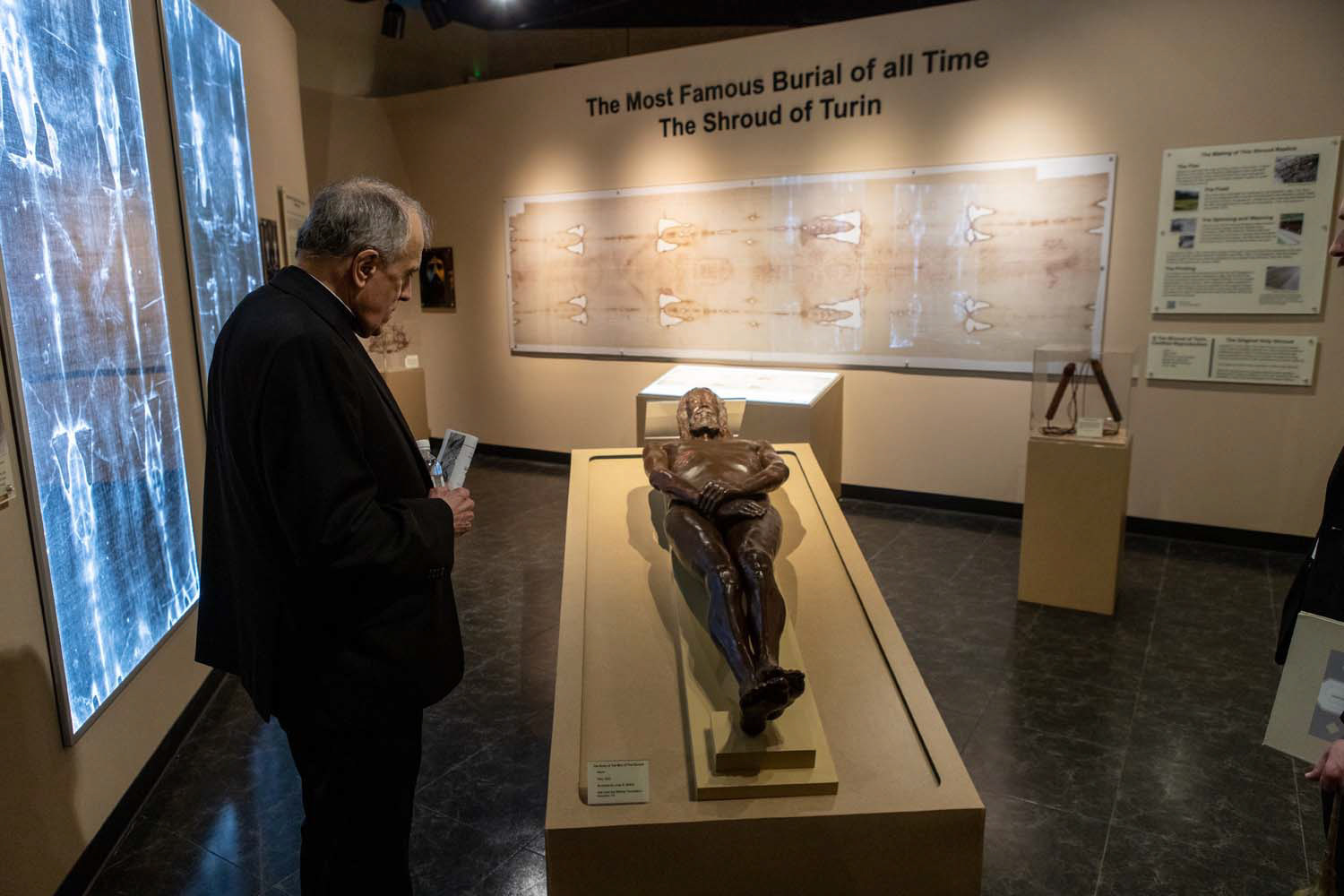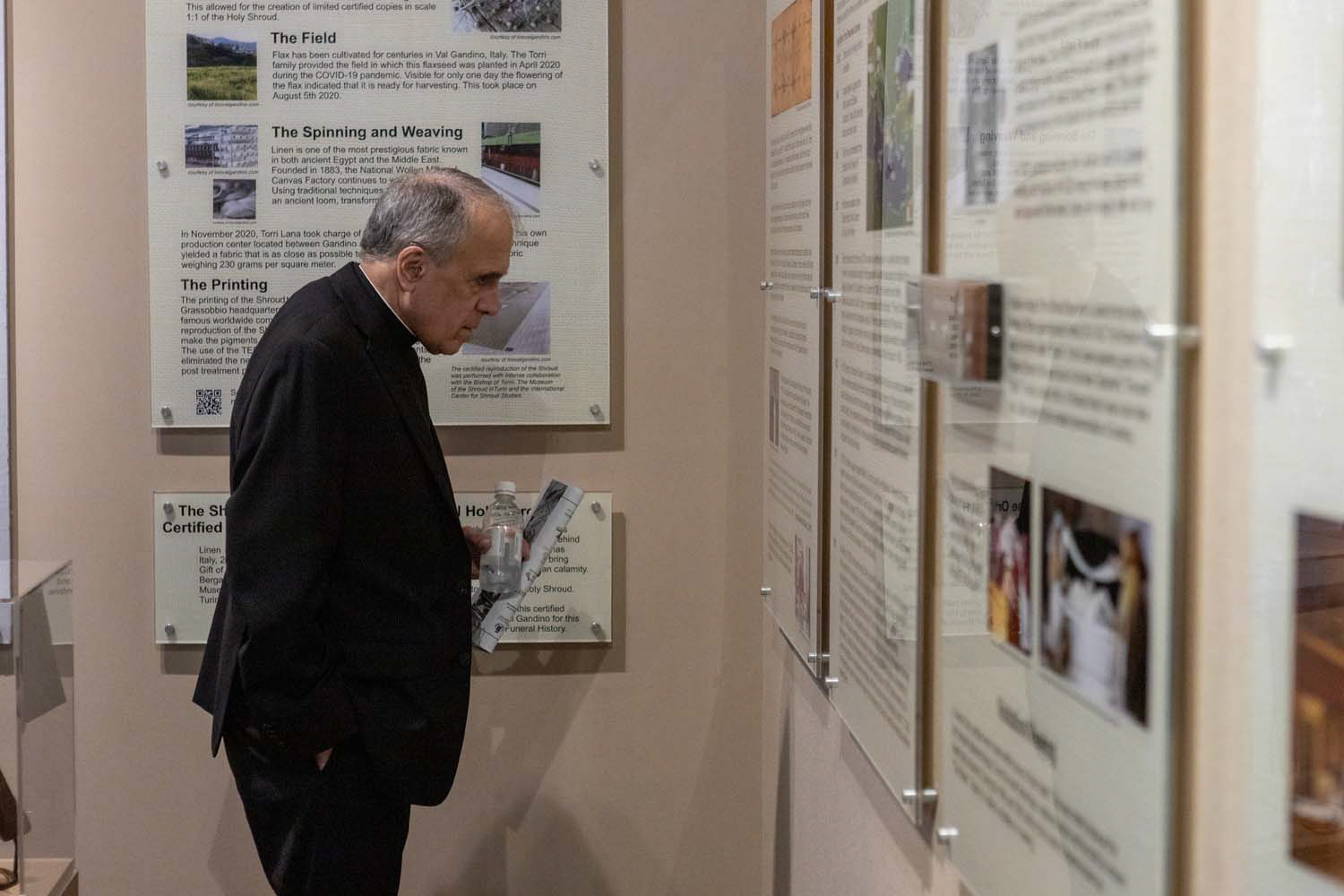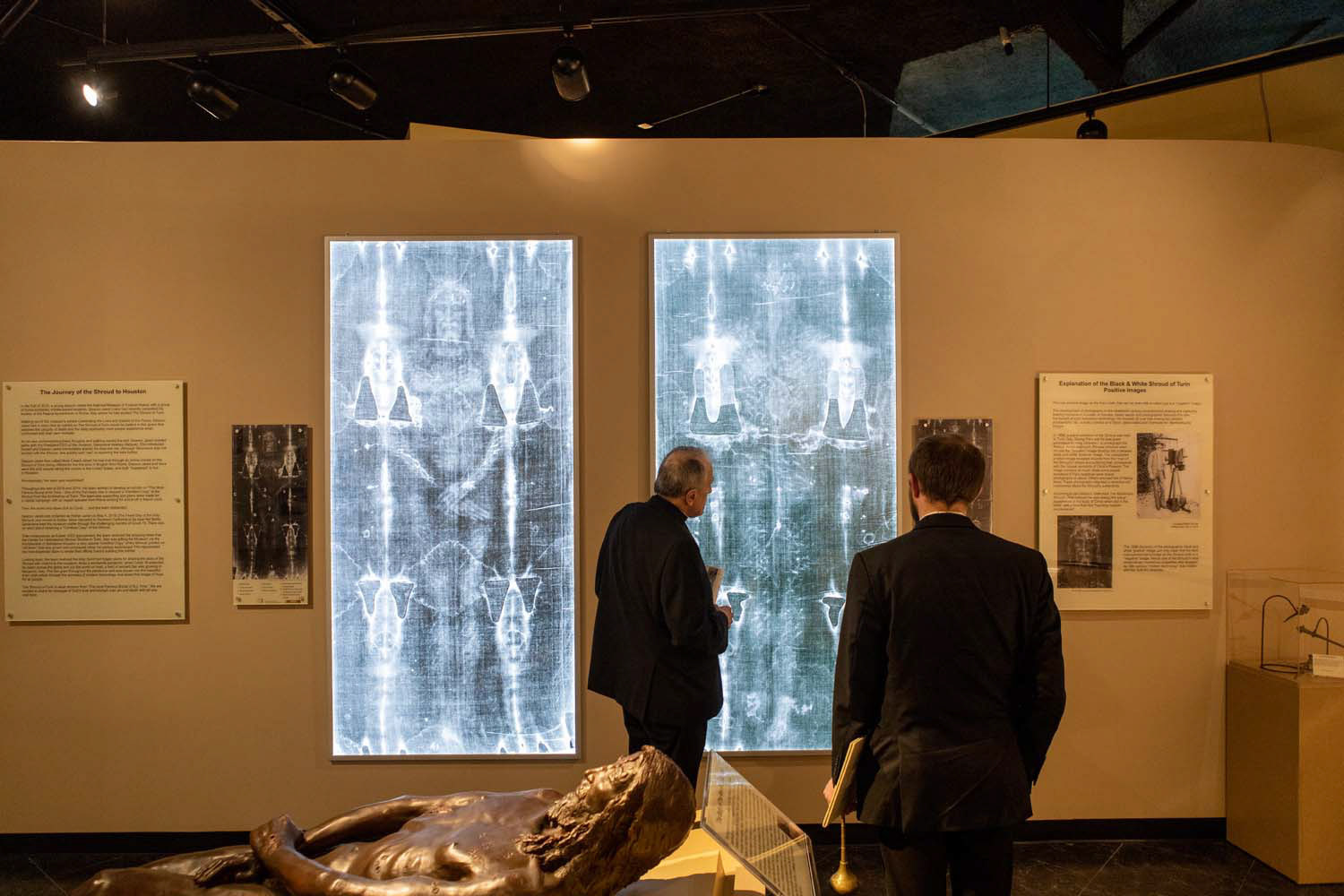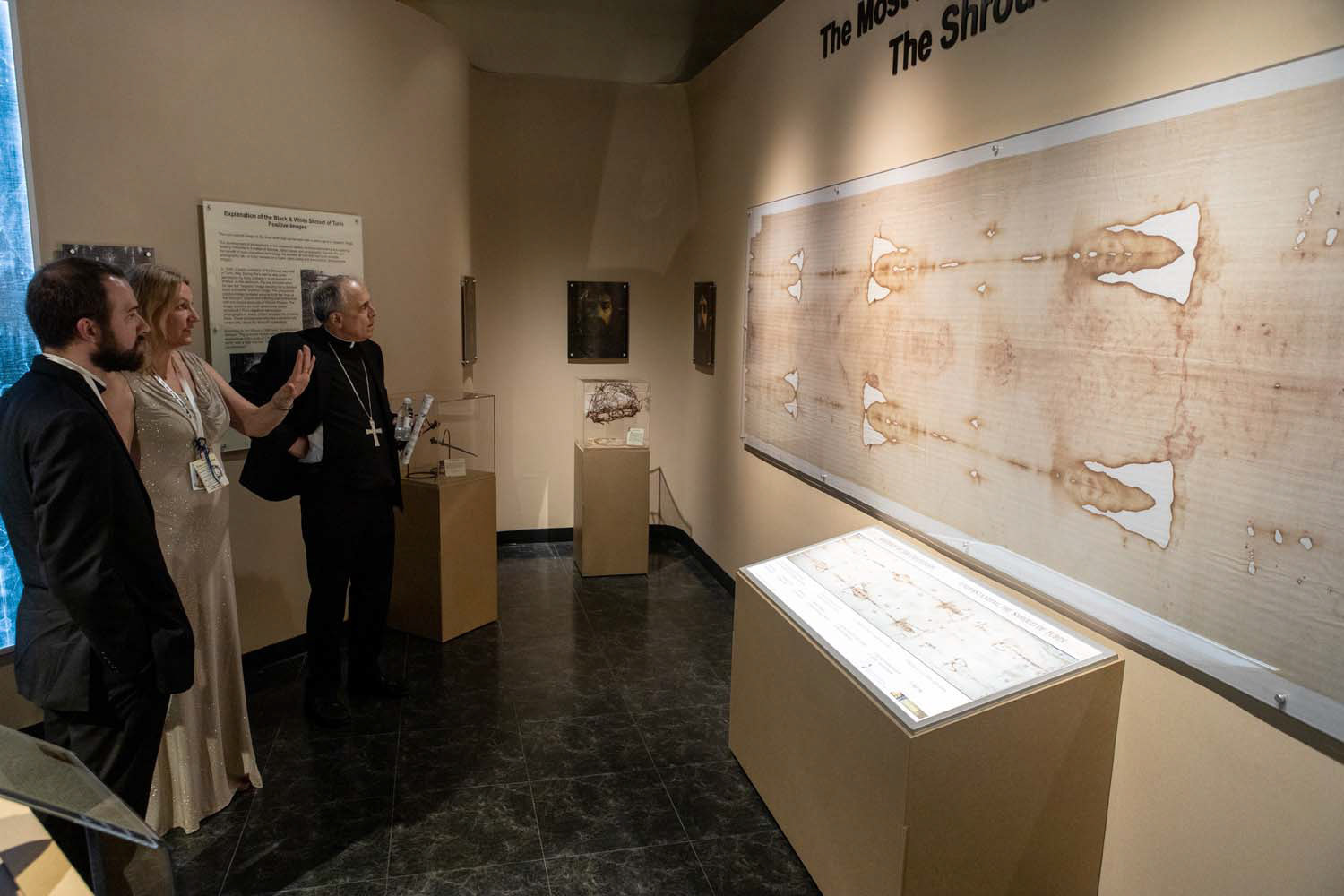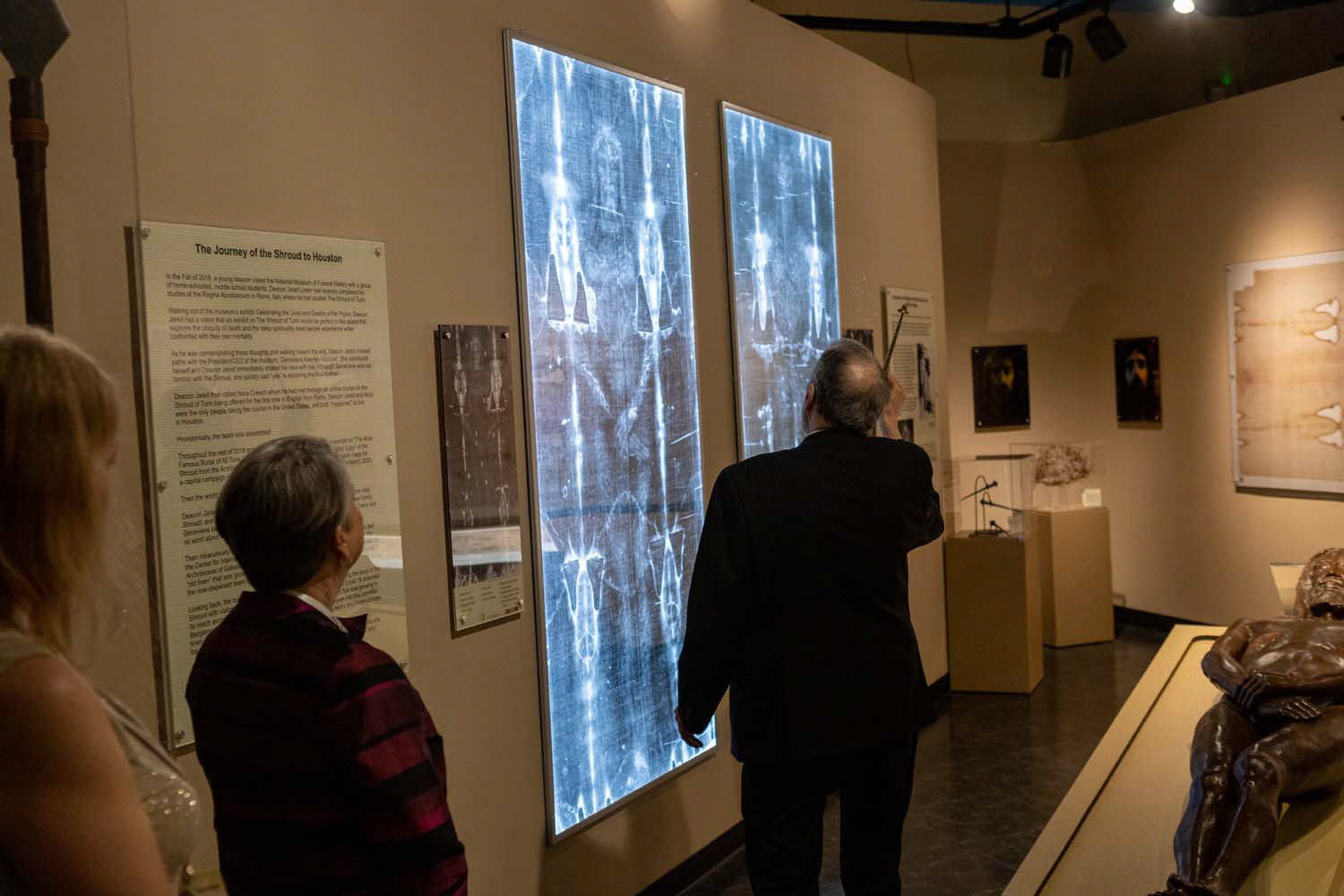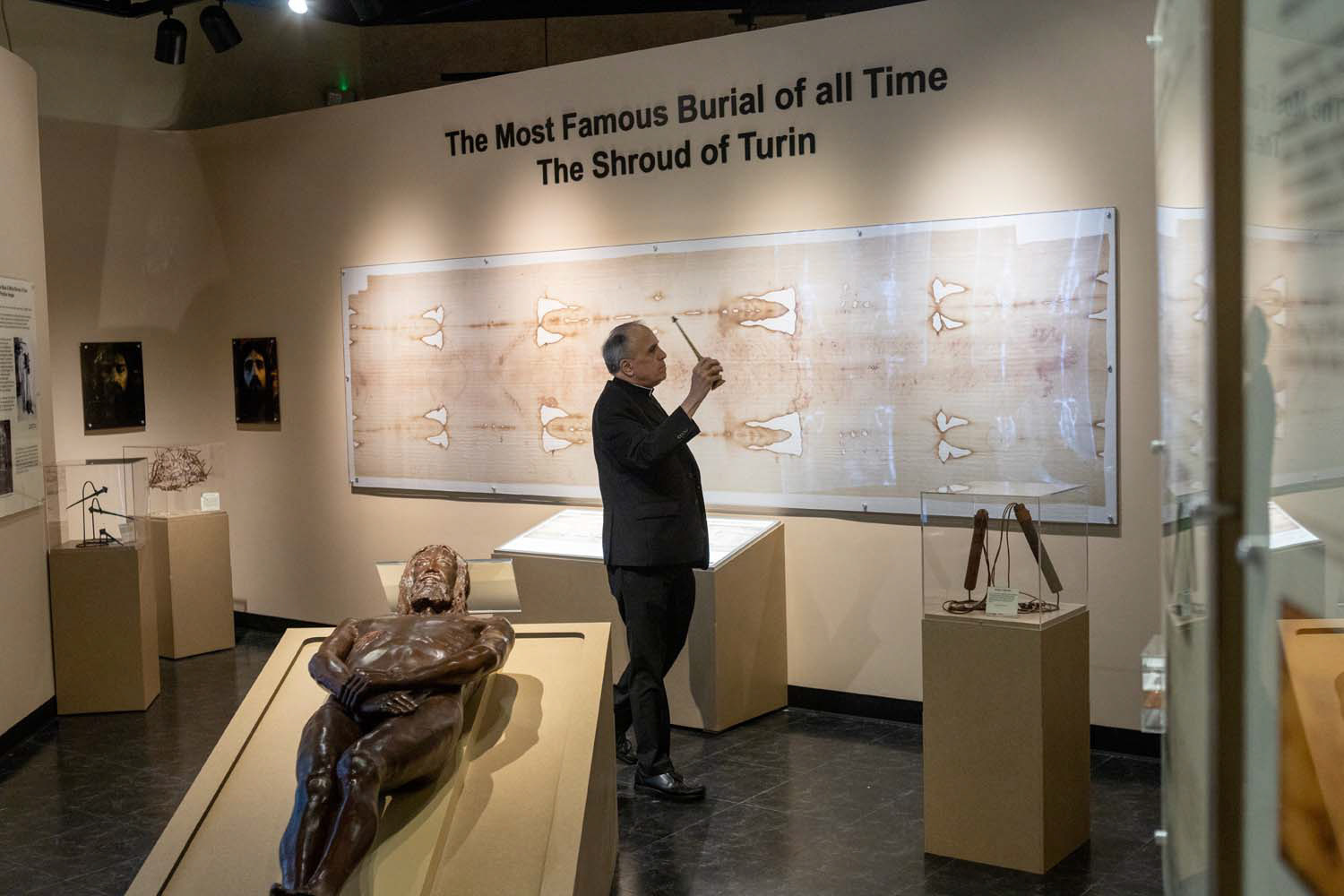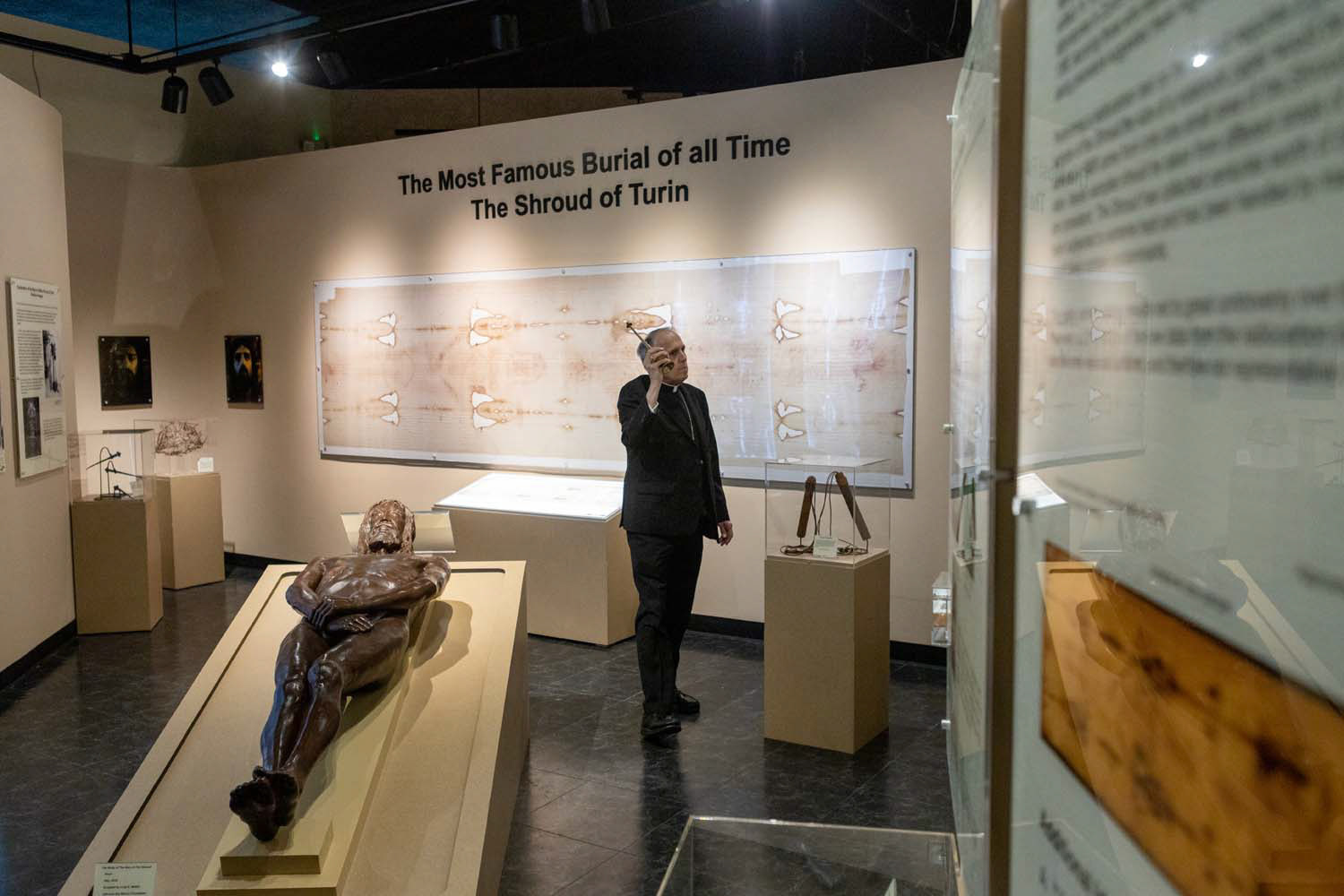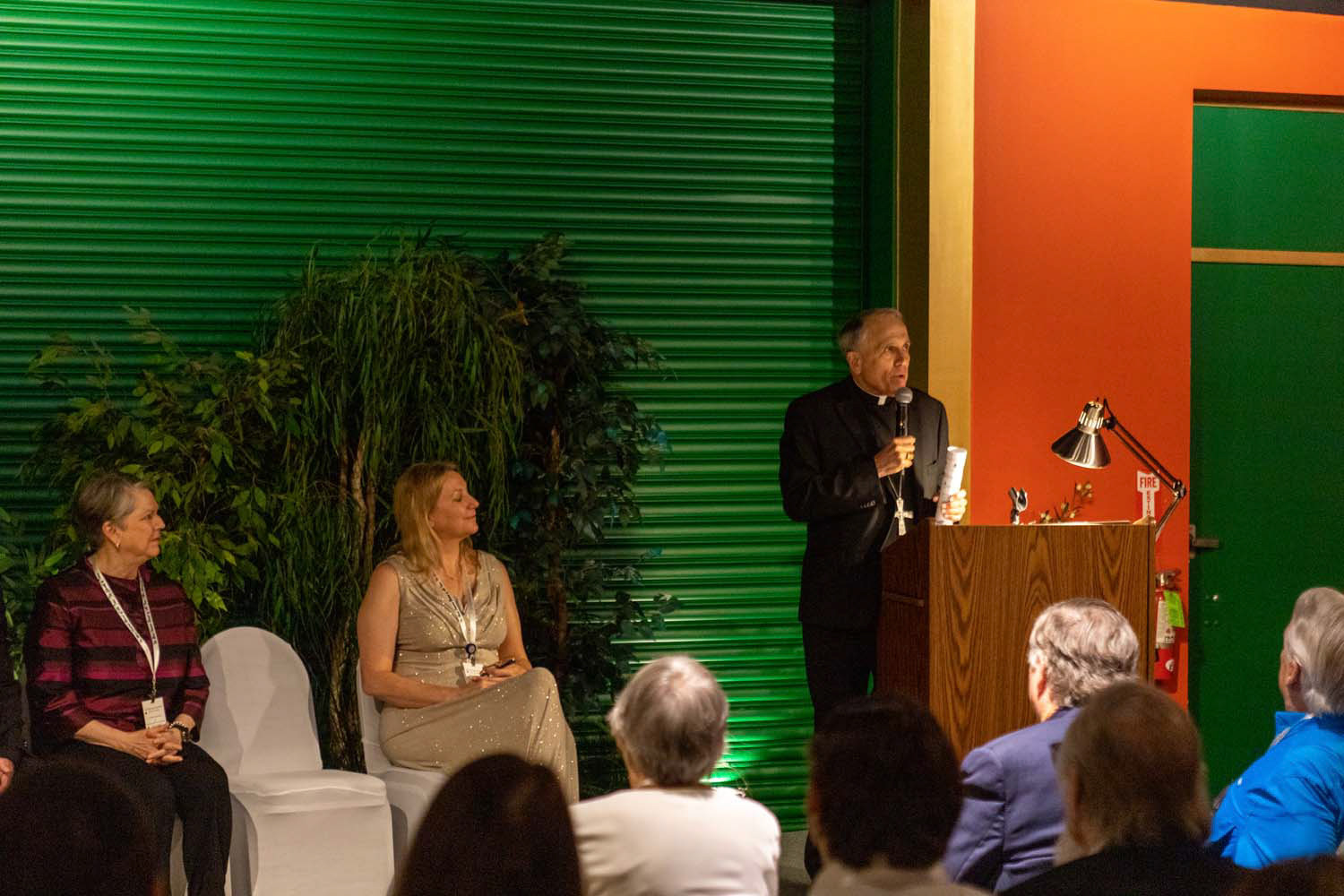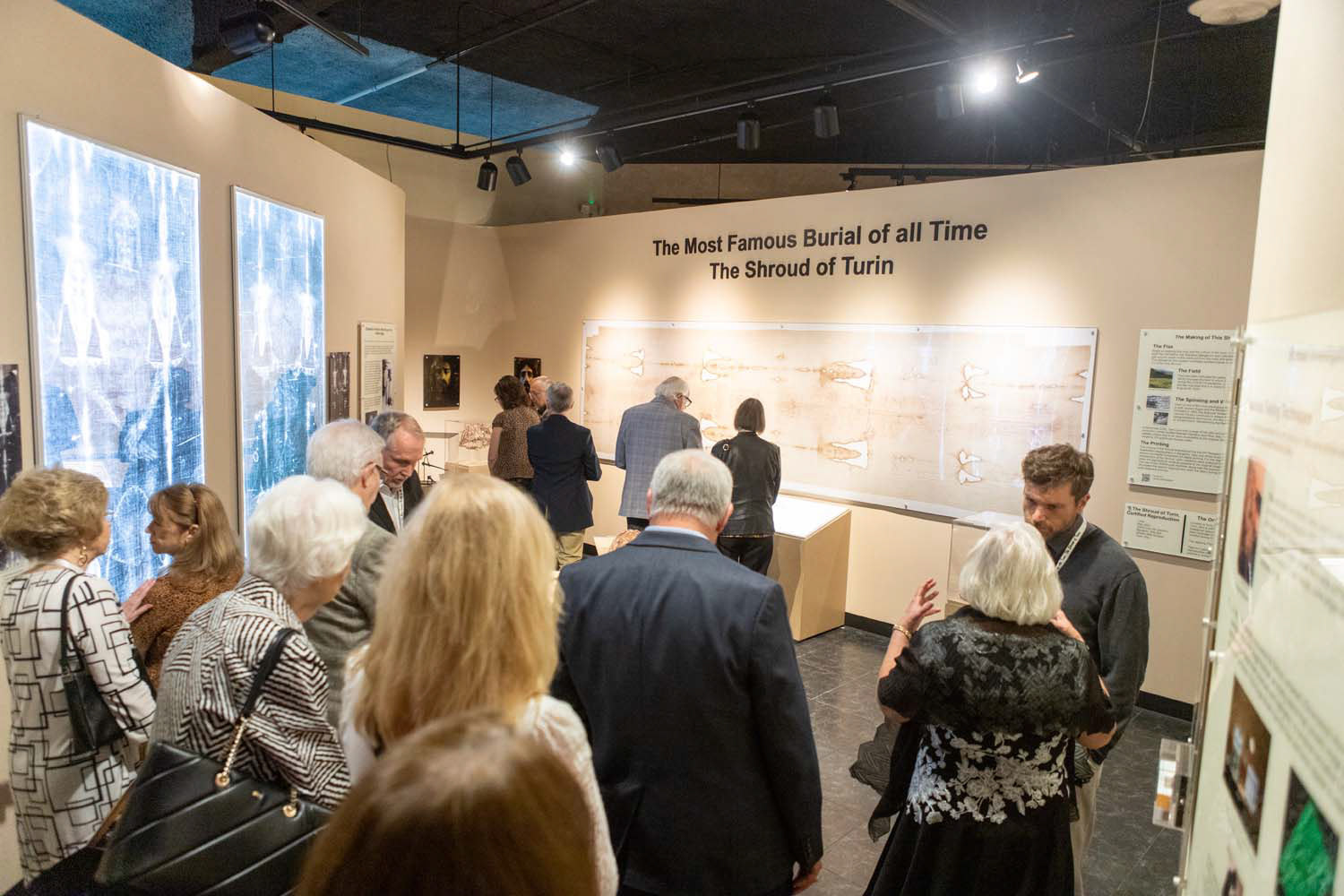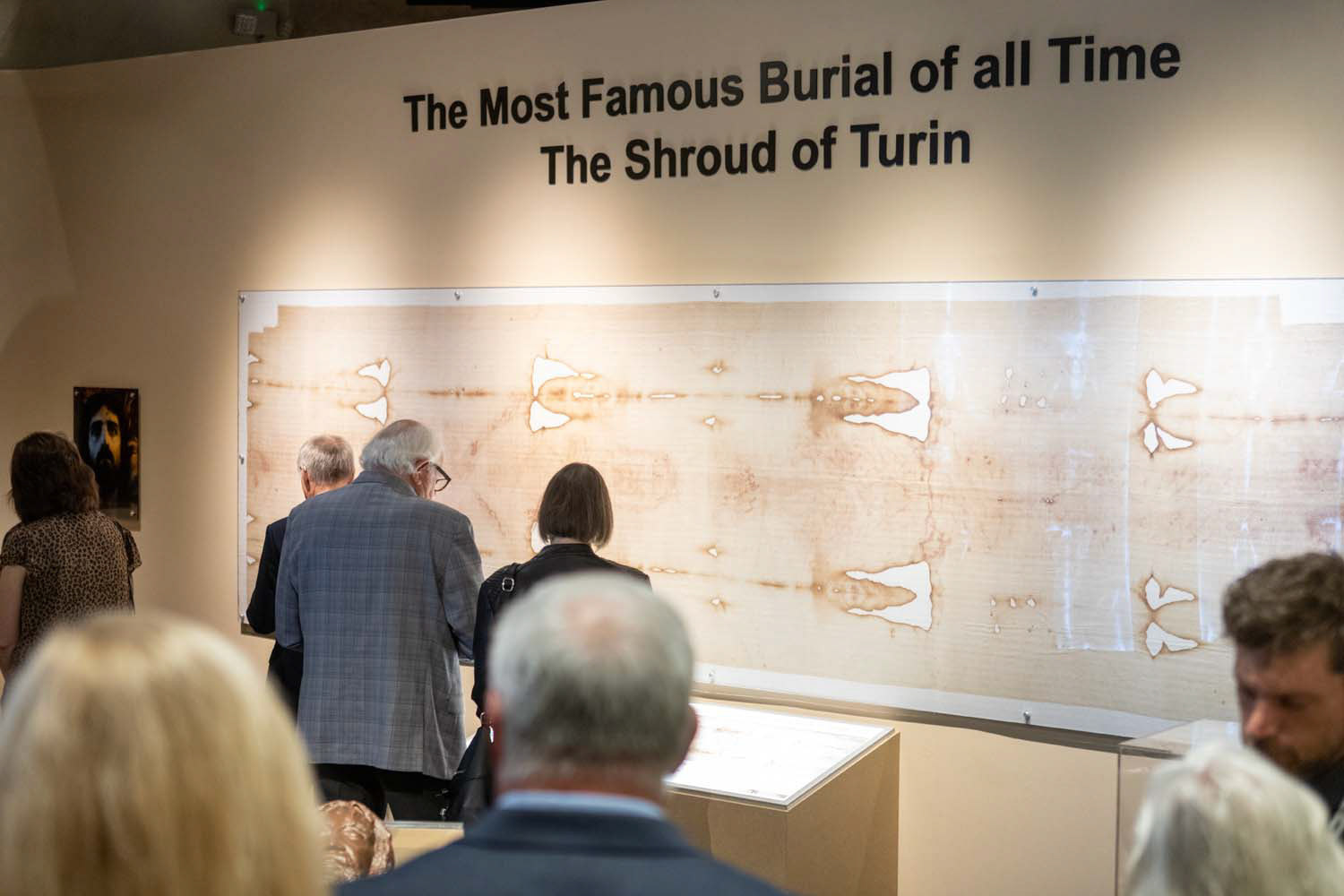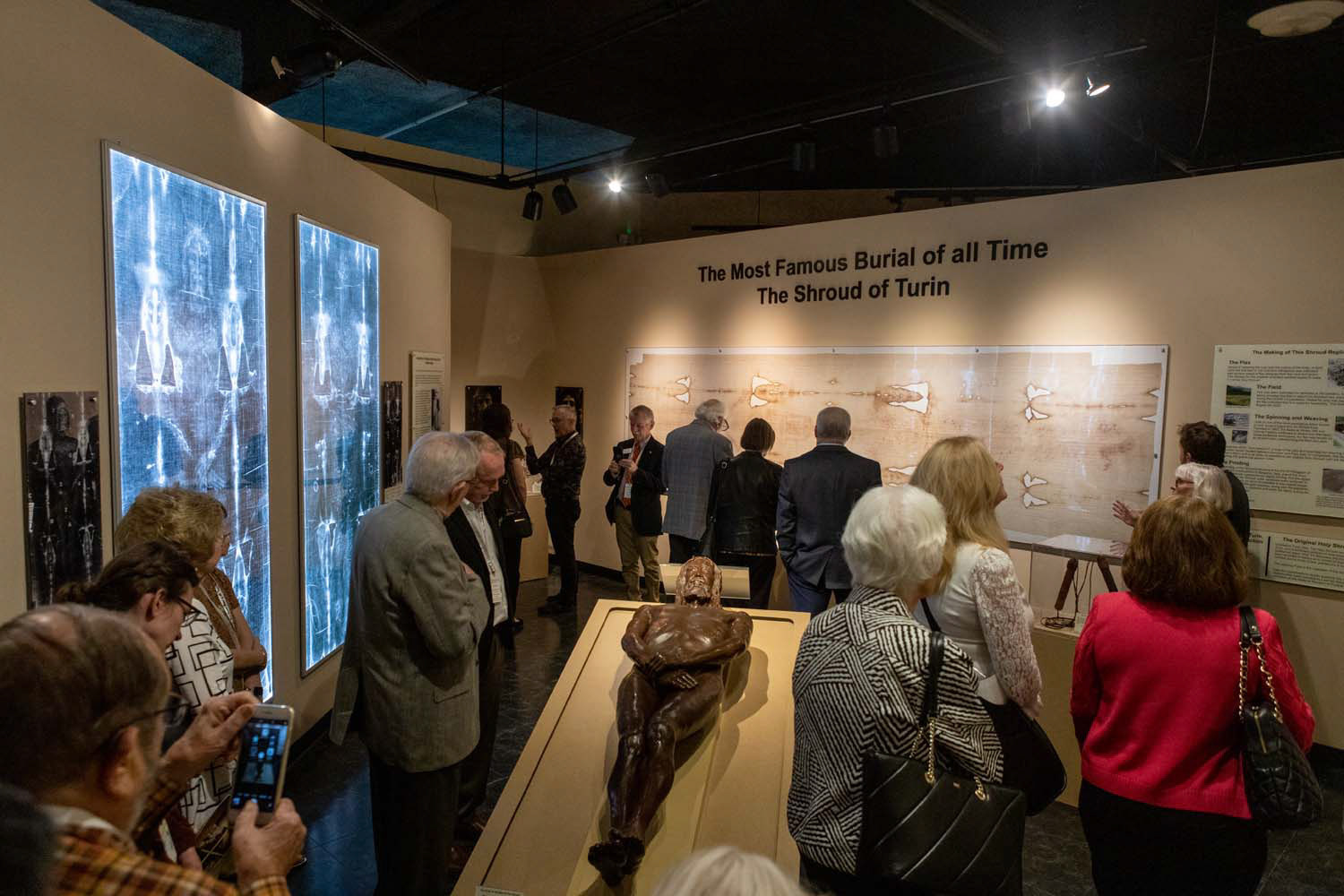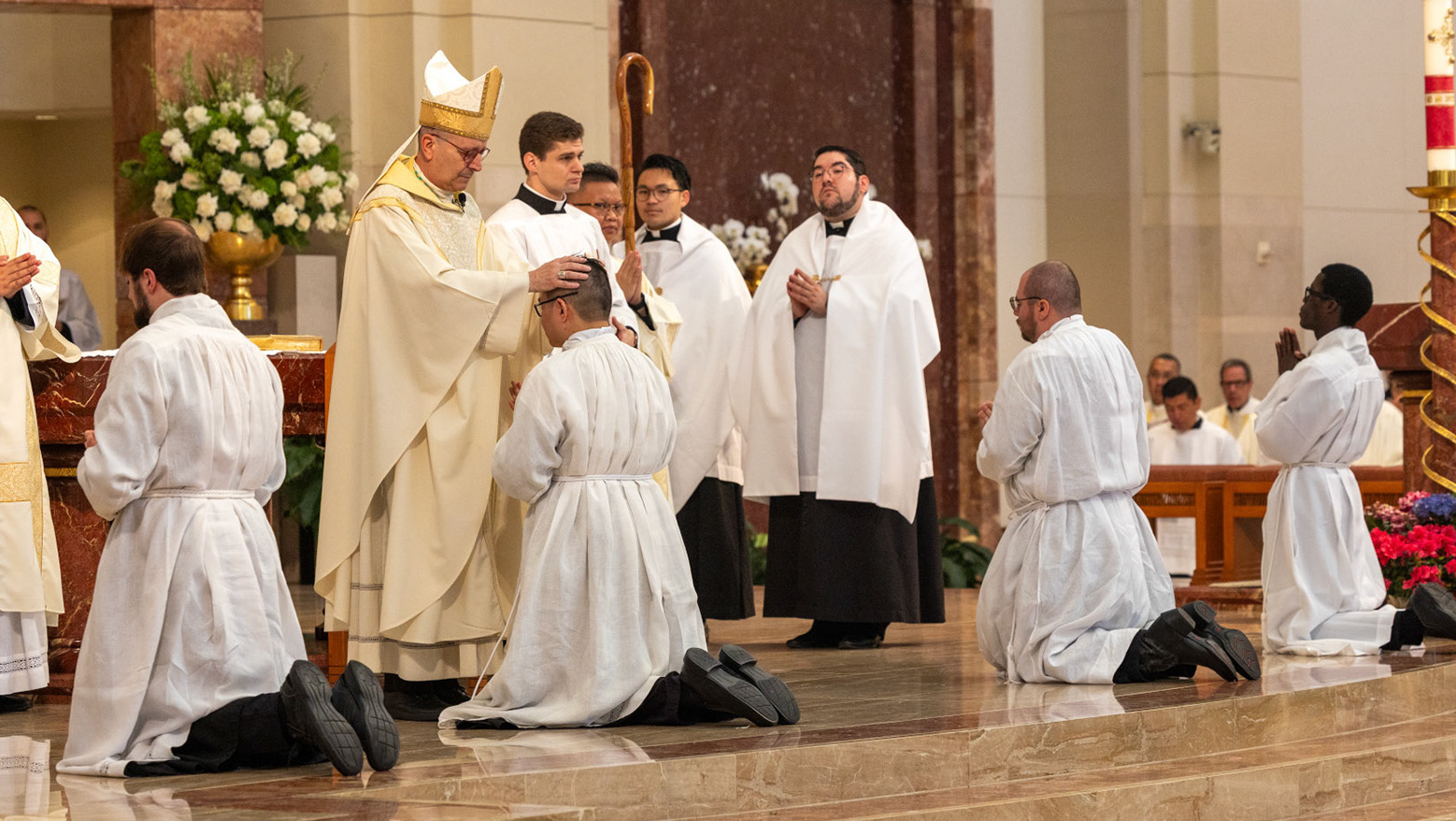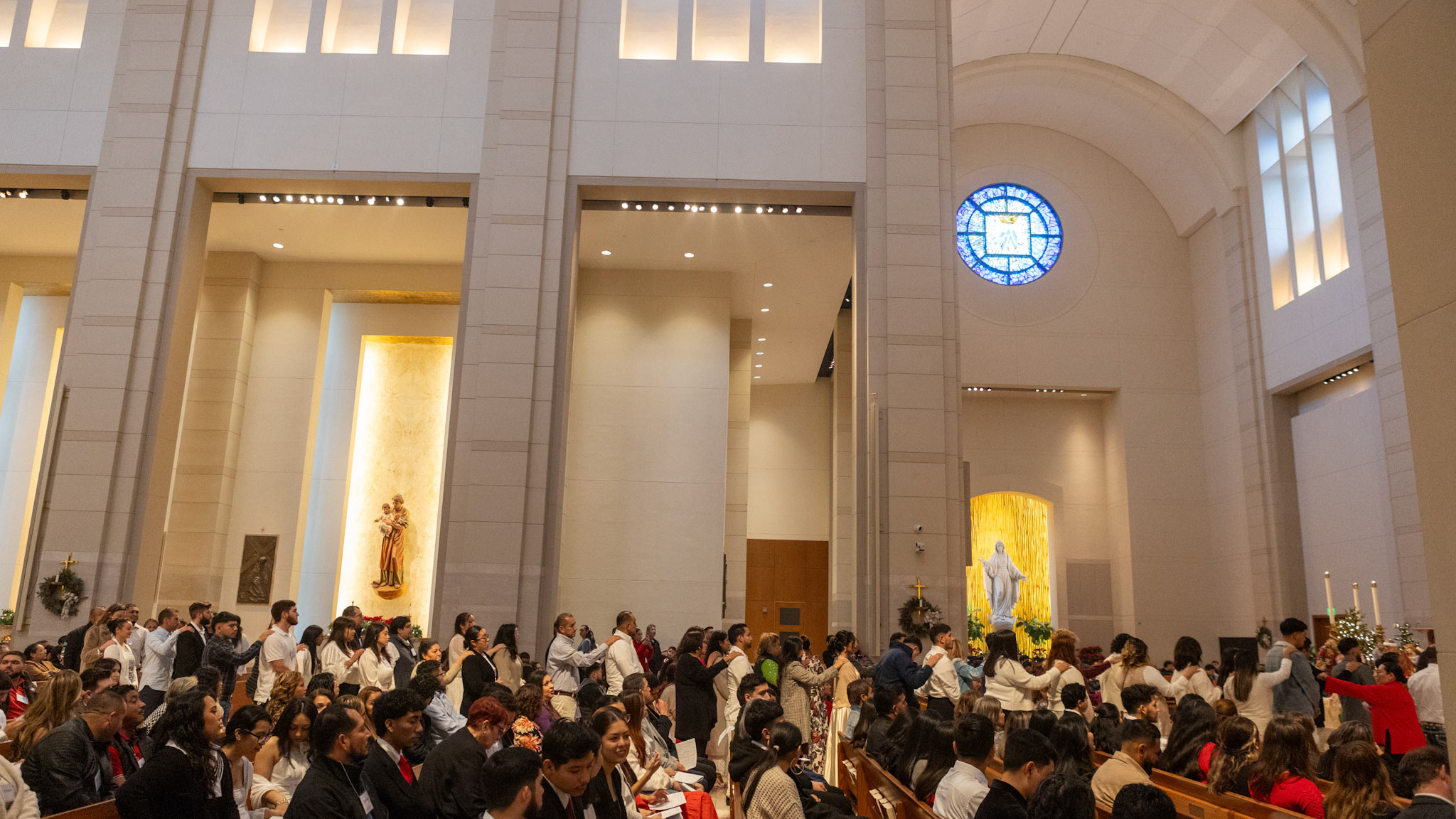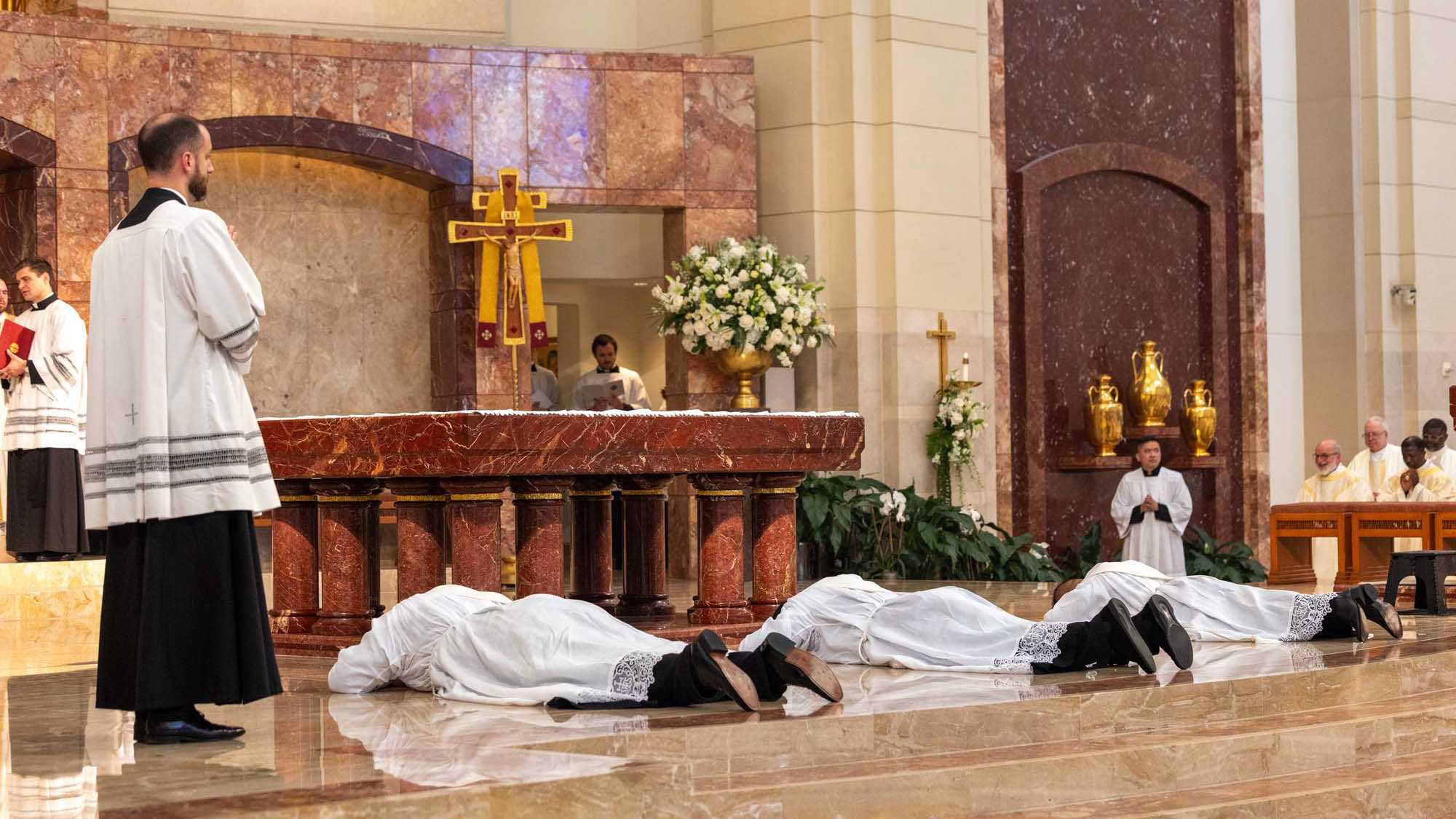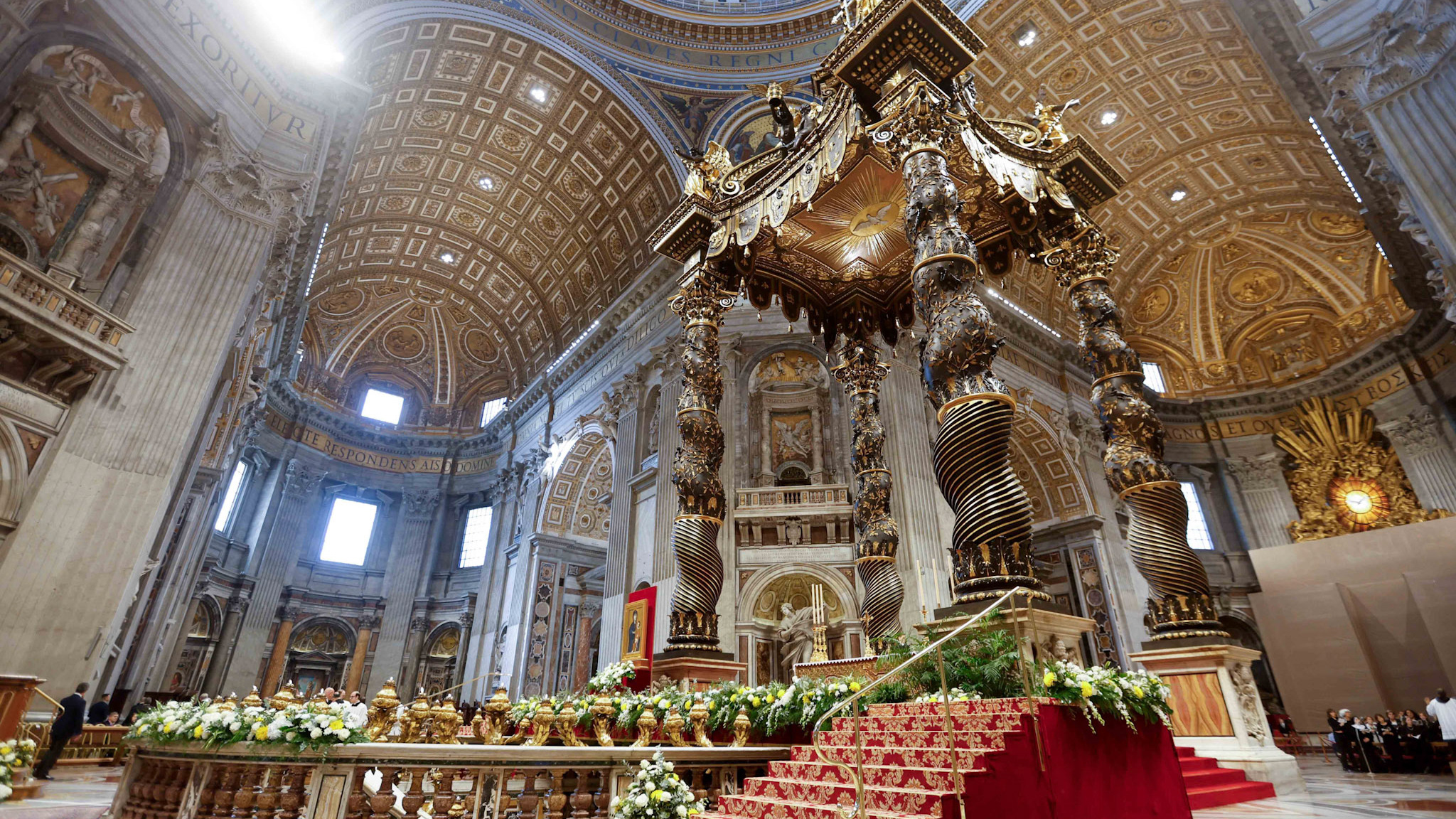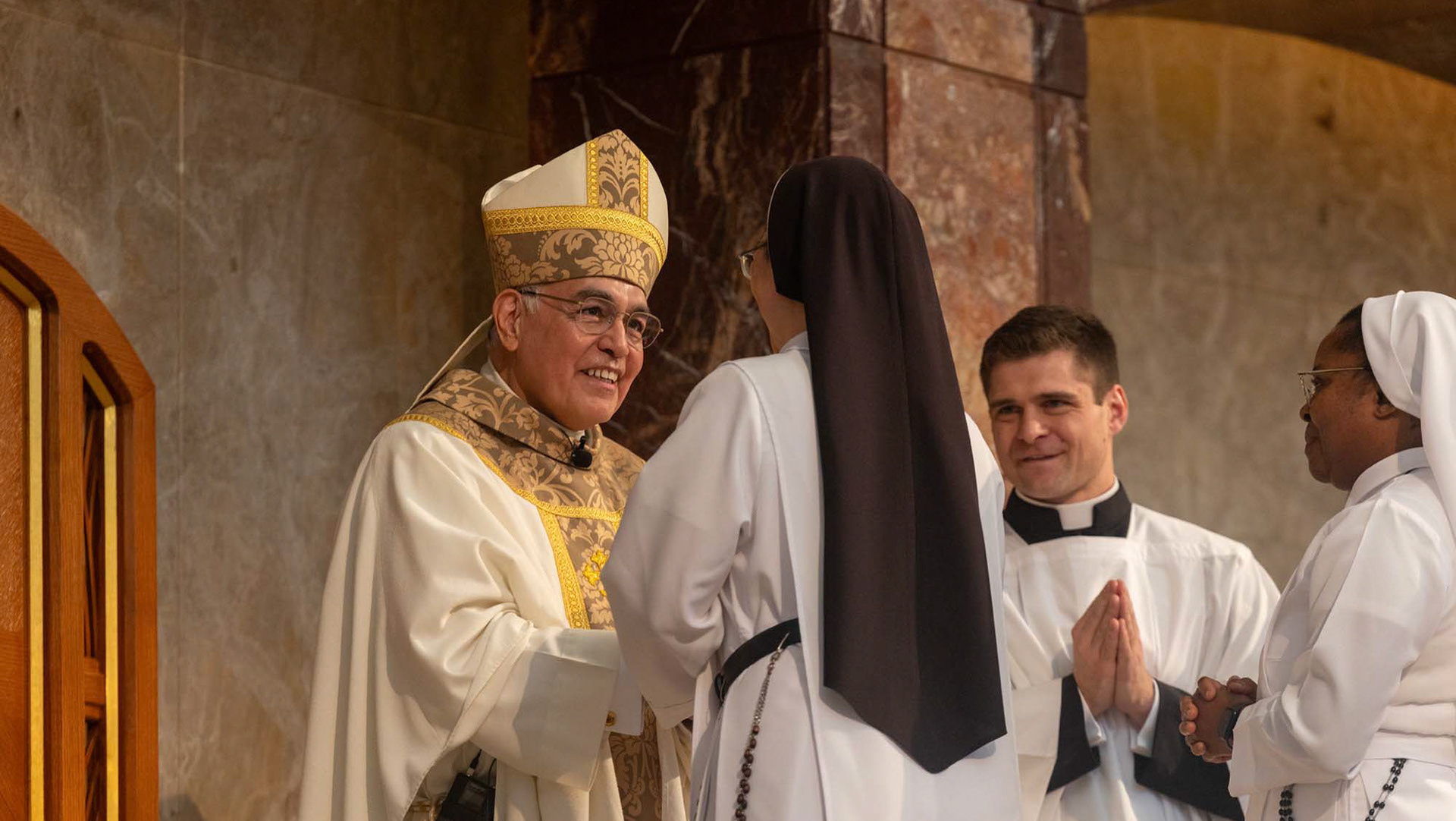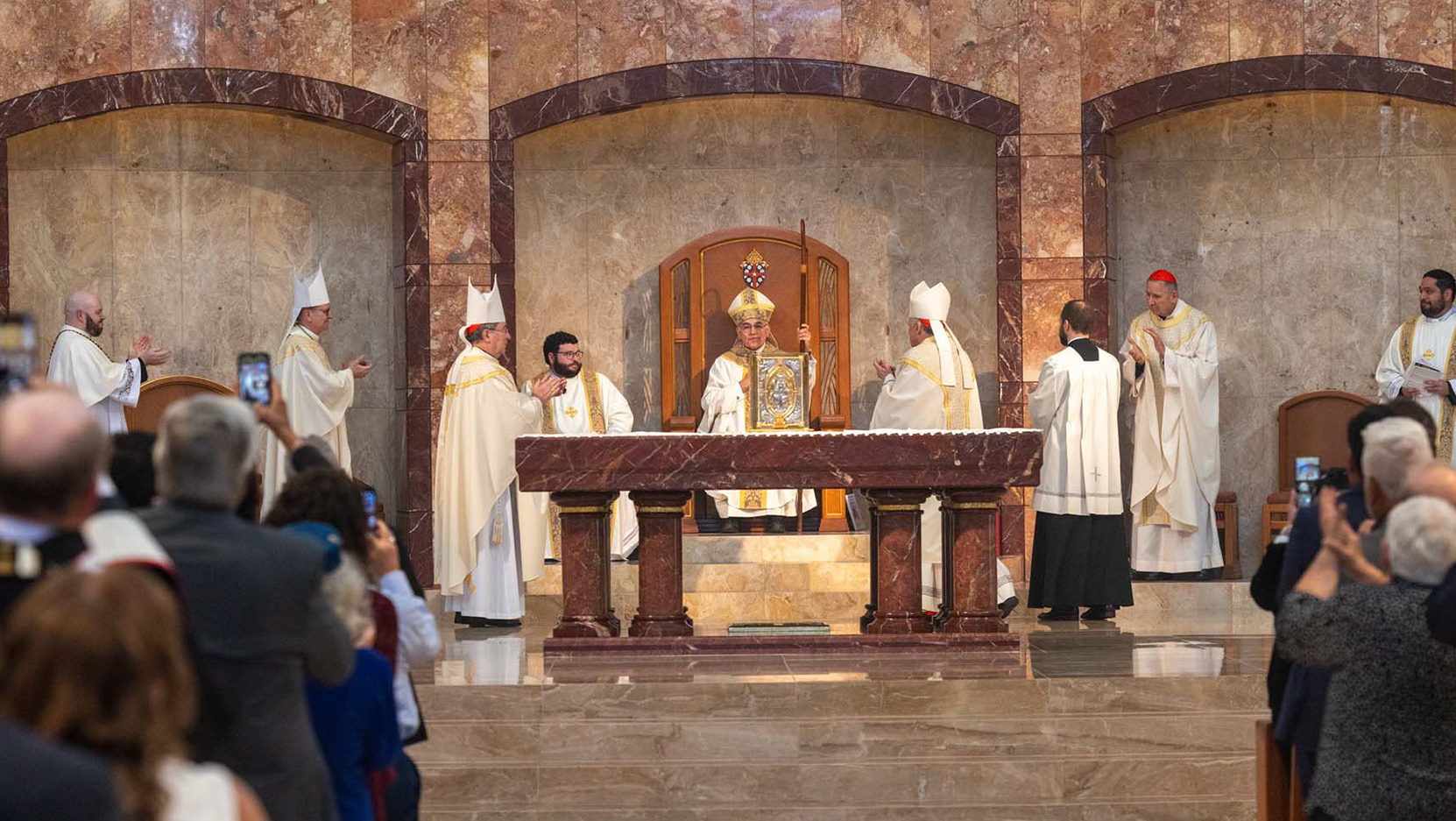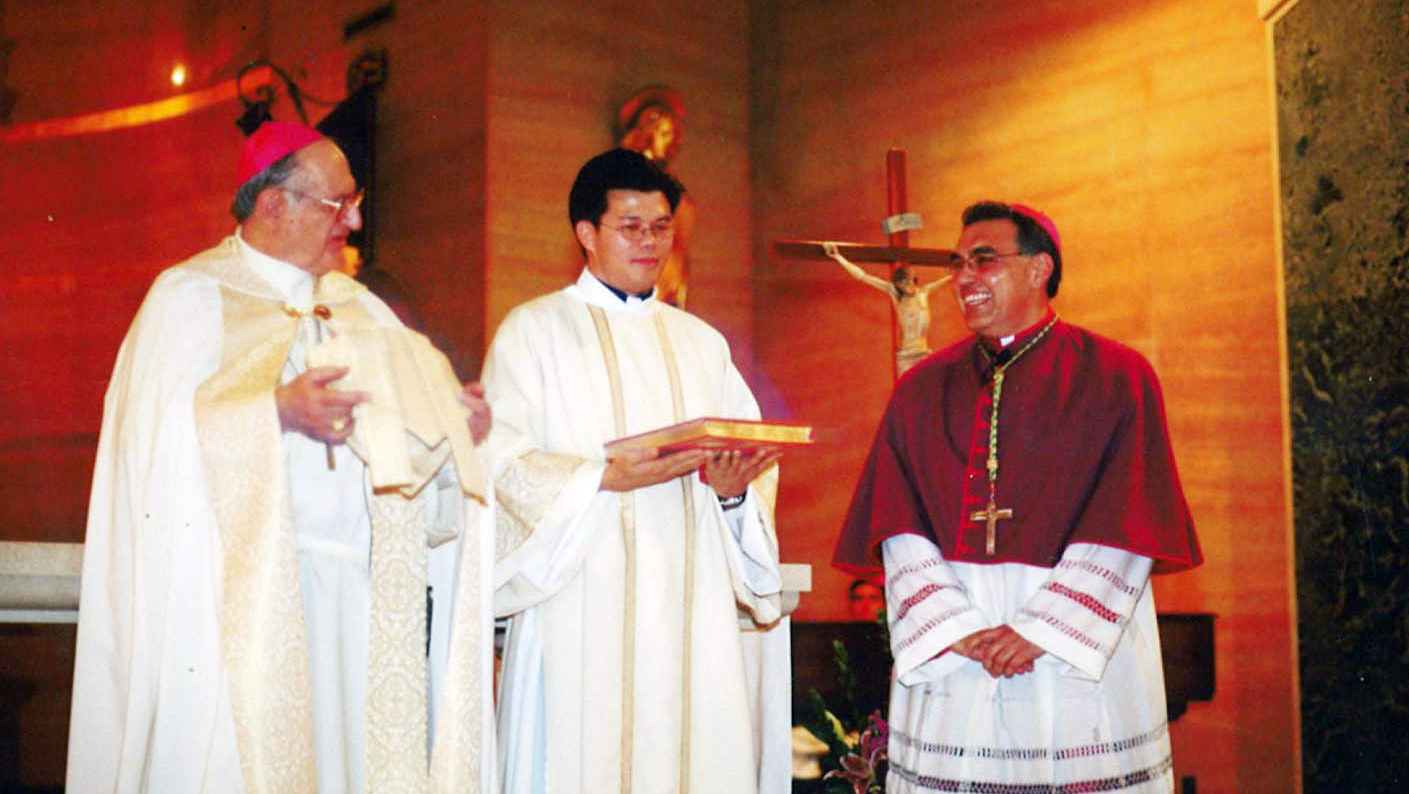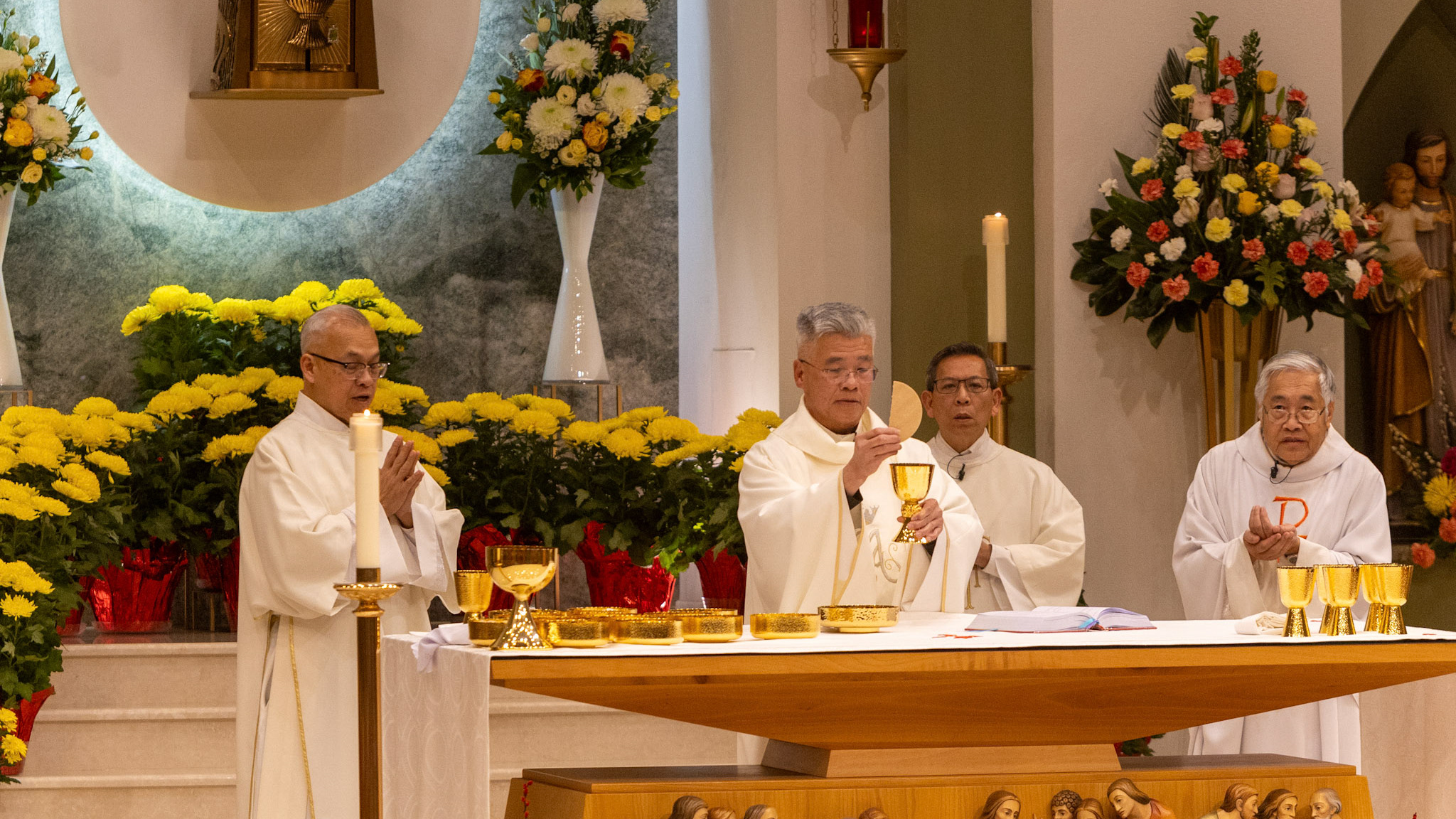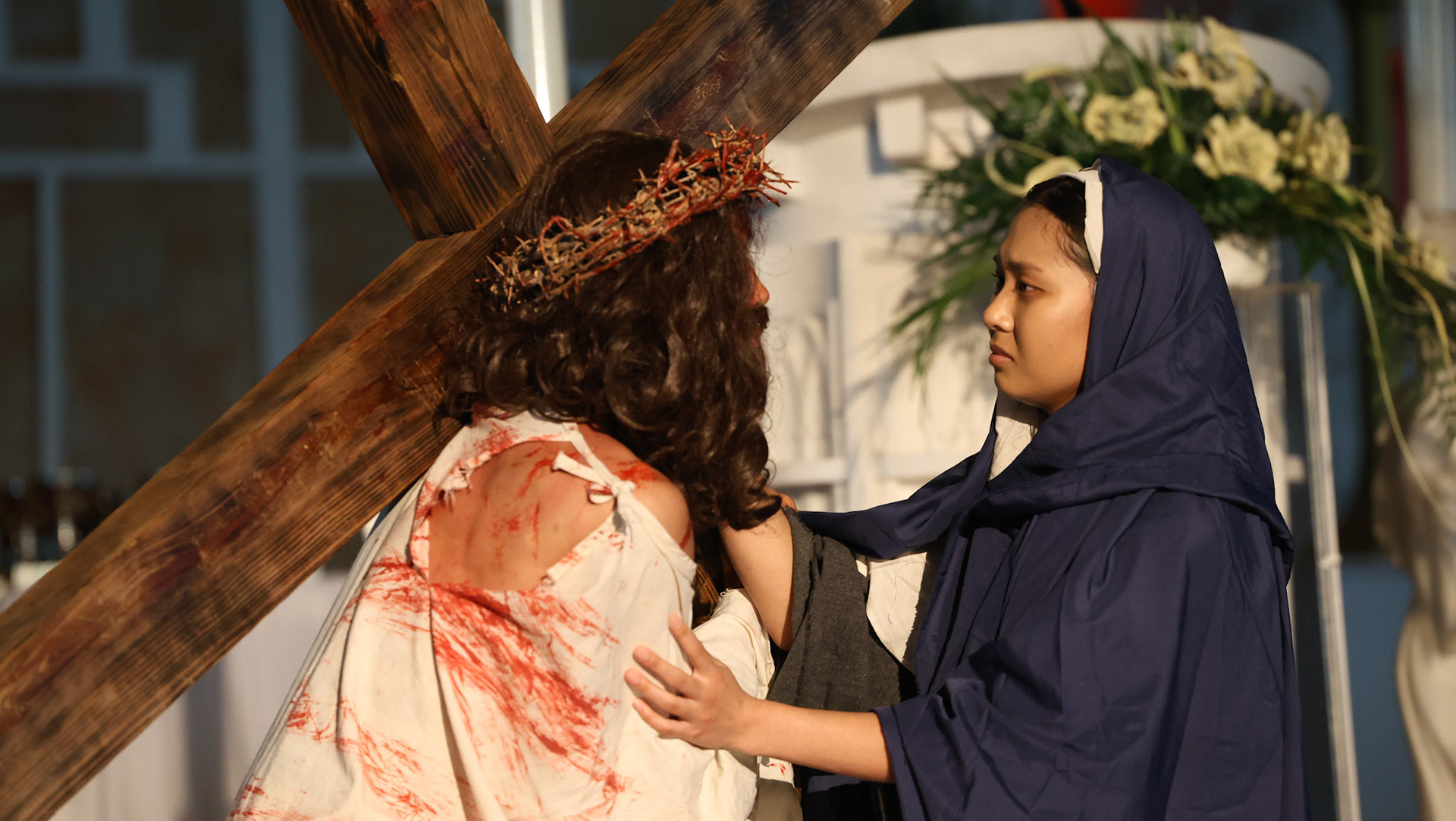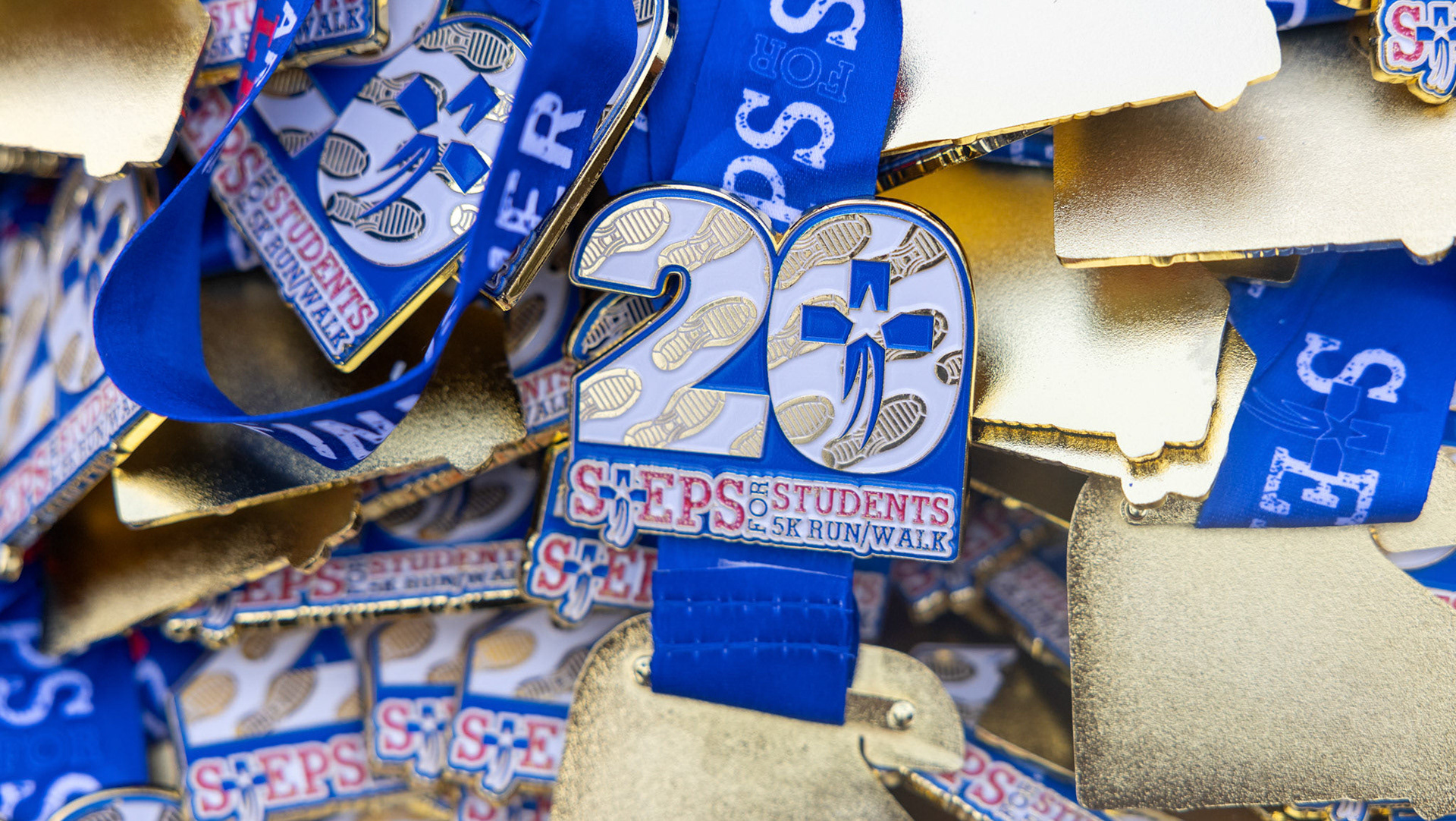HOUSTON — Entering a cave-like entrance, visitors at the National Museum of Funeral History in north Houston confront a life-size statue lying in the tomb, a replica of the man’s body image from the Shroud of Turin.
Across on a wall of the compact space, a 14-foot replica of the well-known Shroud of Turin looms as the possible burial cloth of Jesus.
The exhibit reveals a few surprises. Rather than a “crown” of thorns, a replica of what Roman soldiers created is called a “helmet of thorns” displayed in a case. Based on the wounds indicated on the shroud, the thorns covered the head and extended into the neck.
The exhibit reveals a few surprises. Rather than a “crown” of thorns, a replica of what Roman soldiers created is called a “helmet of thorns” displayed in a case. Based on the wounds indicated on the shroud, the thorns covered the head and extended into the neck.
Also, in a nearby case, the expected long wooden shaft of a Roman spear. But the large diamond-shaped spearhead is bigger than expected and was used to violently thrust upward into the sides of the crucified rather than a slash usually depicted.
The shroud exposition sits adjacent to the museum’s lengthy exhibit on the death of the popes and features two life-size, back-lit screen displays of the shroud’s photonegative scans from official studies. Visitors have room to view the shroud up-close, a certified linen reproduction gifted to the Archdiocese of Galveston-Houston from the Archdiocese of Turin, Italy.
